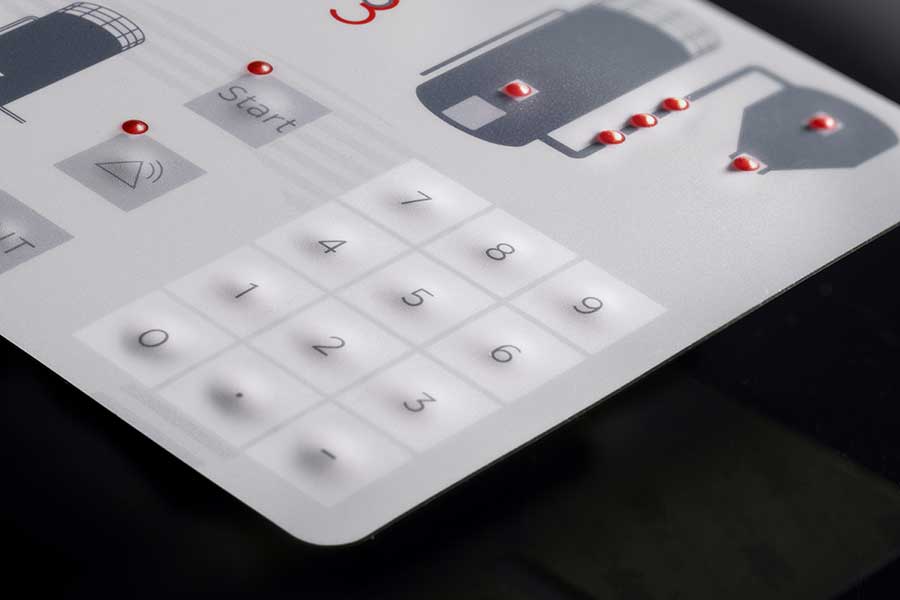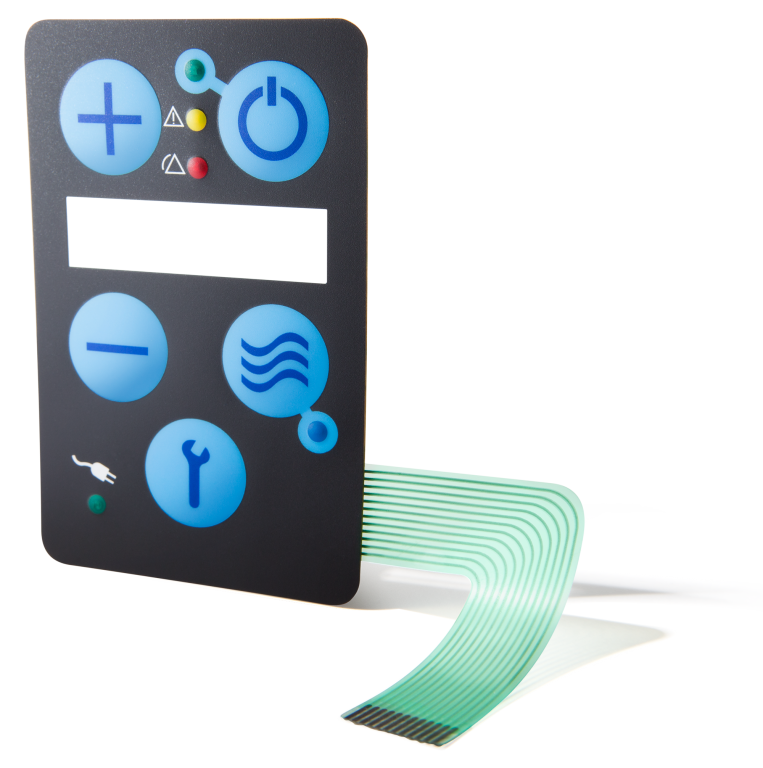A Comprehensive Guide to Membrane Switch Design and Manufacturing
A Comprehensive Guide to Membrane Switch Design and Manufacturing
Blog Article
The Advantages of Using Membrane Layer Changes in Customer Electronics
Membrane layer buttons are increasingly acknowledged for their considerable benefits in customer electronics, specifically in boosting individual interaction and enhancing manufacturing processes. The flexibility in style enables for customized remedies that satisfy varied customer requirements.
Enhanced User Experience
In today's affordable landscape of consumer electronic devices, enhanced user experience is vital; almost 85% of customers focus on instinctive user interfaces. Membrane switches play a crucial function in attaining this degree of functionality.
The responsive responses given by membrane layer switches is vital for leading customer actions, making sure that commands are signed up precisely. This comments system increases and reduces mistakes individual satisfaction, fostering a positive relationship between the customer and the tool. The customizable nature of membrane layer switches over enables makers to customize user interfaces to certain customer demands, making tools much more accessible and welcoming.
Furthermore, membrane buttons can incorporate backlighting and visuals overlays, additionally boosting visibility and usability in diverse settings. This flexibility makes certain that gadgets continue to be functional and easy to use, despite the setup. In general, the integration of membrane changes right into consumer electronic devices considerably improves user experience, driving brand loyalty and complete satisfaction in a significantly open market.
Cost-efficient Manufacturing
Customer electronic devices producers are constantly seeking ways to stabilize high quality with price, and membrane switches use a compelling solution for cost-effective production. membrane switch. These parts are inherently less complex than conventional mechanical switches, which lowers both manufacturing prices and complexity. The lightweight design of membrane changes permits reduced delivery expenses and less complicated combination right into small tools, additionally boosting their charm in an affordable market

Suppliers can create membrane buttons in high quantities, benefiting from economic climates of scale. This automation capacity makes sure constant high quality while considerably lowering per-unit expenses. In addition, the products used in membrane switches, such as polyester and polycarbonate, are commonly cheaper than those needed for conventional switch technologies, adding to total cost financial savings.
The manufacturing process for membrane switches over typically calls for fewer steps and less labor contrasted to various other button types. This streamlined approach not only saves money on labor expenses however additionally speeds up time-to-market, allowing firms to respond swiftly to consumer demand. The mix of decreased material expenditures and effective production procedures settings membrane changes as a clever financial investment for producers intending to supply high-quality customer electronic devices at affordable price points.
Style Versatility and Personalization
While conventional mechanical buttons frequently impose constraints on layout due to their mass and called for mounting devices, membrane switches offer unparalleled flexibility and personalization options for customer electronics. This innovative technology enables designers to produce smooth, low-profile interfaces that can seamlessly incorporate right into various item visual appeals, from smart devices to kitchen area home appliances.
Membrane switches can be produced in practically any form or size, making it possible for manufacturers to customize the layout to certain ergonomic and practical demands. This versatility not just enhances user experience but likewise enables imaginative designs that straighten with brand identification. The usage of printed graphics on membrane switches supplies the possibility for lively colors and detailed layouts, which can be easily customized without considerable expense implications.
Furthermore, membrane layer switches can incorporate several functionalities into a solitary layer, minimizing the requirement for numerous elements and simplifying assembly procedures. This streamlined design strategy lessens space and weight, making it suitable for small consumer electronic devices. Generally, the style adaptability and personalization capabilities of membrane changes equip makers to innovate, eventually resulting in more easy to use and appealing products.
Resilience and Integrity
As innovation remains to develop, the toughness and dependability of membrane buttons have actually ended up being important considerations for manufacturers in the consumer electronics market. Membrane switches are made to i was reading this stand up to rough ecological problems, consisting of temperature fluctuations, dampness, and dust direct exposure. Their robust building and construction usually includes multi-layered products that offer an efficient barrier versus impurities, ensuring durability and constant efficiency.
Along with environmental resistance, membrane switches over deal remarkable mechanical reliability. Unlike conventional mechanical switches, which might break gradually, membrane switches over use a covered style that lessens the risk of mechanical failing. The lack of relocating components not only visit this page enhances their life expectancy but also minimizes wear and tear, making them suitable for high-usage applications.
In addition, membrane layer buttons can endure a considerable number of actuations without loss of capability, often surpassing millions of cycles (membrane switch). This resilience translates to decrease substitute expenses and reduced downtime for makers and consumers alike. Generally, the mix of ecological strength and mechanical dependability makes membrane layer switches a strategic choice for consumer electronics, ensuring that gadgets continue to be functional and efficient throughout their desired life expectancy

Streamlined Item Growth
The resilience and integrity of membrane switches over substantially add to streamlined item advancement in the consumer electronic devices sector. By incorporating these buttons early in the style procedure, suppliers can lower the complexity and variety of components required in their products. Membrane layer switches are lightweight and compact, permitting more efficient space utilization within tools, which can cause simplified setting up procedures.

The ease of making membrane buttons also plays a critical role in item advancement. With modern printing techniques and materials, manufacturing can be scaled successfully, reducing lead times and minimizing waste. This causes reduced manufacturing expenses, enhancing overall profitability.

Verdict
In verdict, membrane layer switches significantly boost consumer electronic devices by offering an improved individual experience, affordable production processes, and versatile design options. The assimilation of membrane layer changes stands for a calculated choice for manufacturers web seeking to optimize item layout and efficiency.
Membrane switches are significantly recognized for their considerable advantages in customer electronic devices, especially in enhancing customer communication and simplifying manufacturing processes. Furthermore, the products used in membrane layer switches, such as polyester and polycarbonate, are frequently less pricey than those needed for traditional switch modern technologies, adding to general cost financial savings.
The manufacturing process for membrane switches normally needs fewer steps and much less labor contrasted to various other button types. Unlike traditional mechanical buttons, which may put on out over time, membrane switches use a covered design that reduces the risk of mechanical failure.In conclusion, membrane layer switches over dramatically boost customer electronic devices by supplying an enhanced user experience, cost-effective manufacturing procedures, and functional style choices.
Report this page